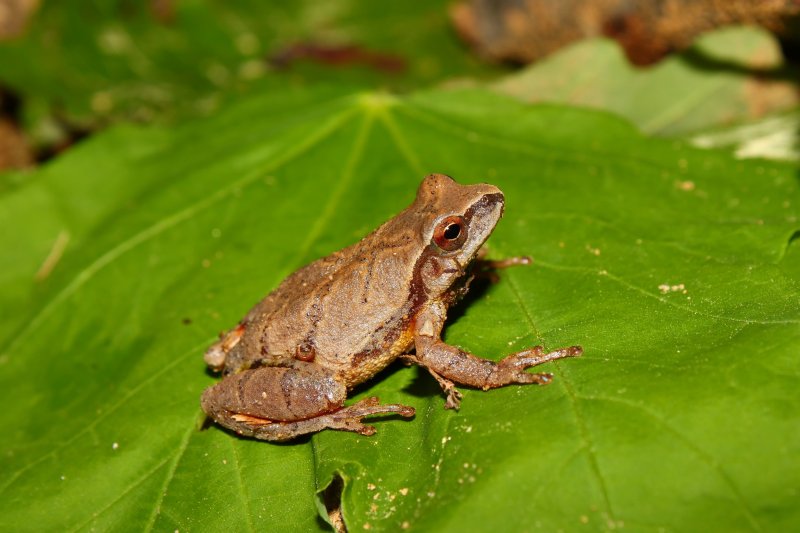Spring Peeper (pseudacris crucifer)
Spring Peeper (pseudacris crucifer): For many, the jingling sound emitted by these tiny chorus frogs foreshadows the coming of warmer weather
- One of North Carolina’s most common amphibians, these tiny frogs usually measure about an inch-and-a-half long and are easily identified by a dark X-shaped marking across their tan or light copper-colored backs, hence the species name crucifer. Peepers are well camouflaged to look like tree bark and have some ability to make themselves lighter or darker in order to better match their surroundings.
- Spring peepers live in wooded wetlands and can be found from northern Florida to Canada.
- Although they are good climbers, these frogs spend most of their time on the ground, often hiding under leaves during the day.
- The peeper is one of five frog species in North America that can survive being frozen. As temperatures dip below freezing, these amphibians produce their own “antifreeze” to protect their vital organs. Up to 70 percent of the peeper’s body can freeze, during which time its heart stops beating and appears dead. Scientists aren’t sure how they wake up, but when they do, they must go through a healing process.
- Their shrill, bird-like peep can be heard beginning in late winter in North Carolina, with amorous males “singing” for female attention. The warmer and rainier the nights, the louder the chorus. Being in close proximity to these frisky frogs’ breeding areas can be nearly deafening!
